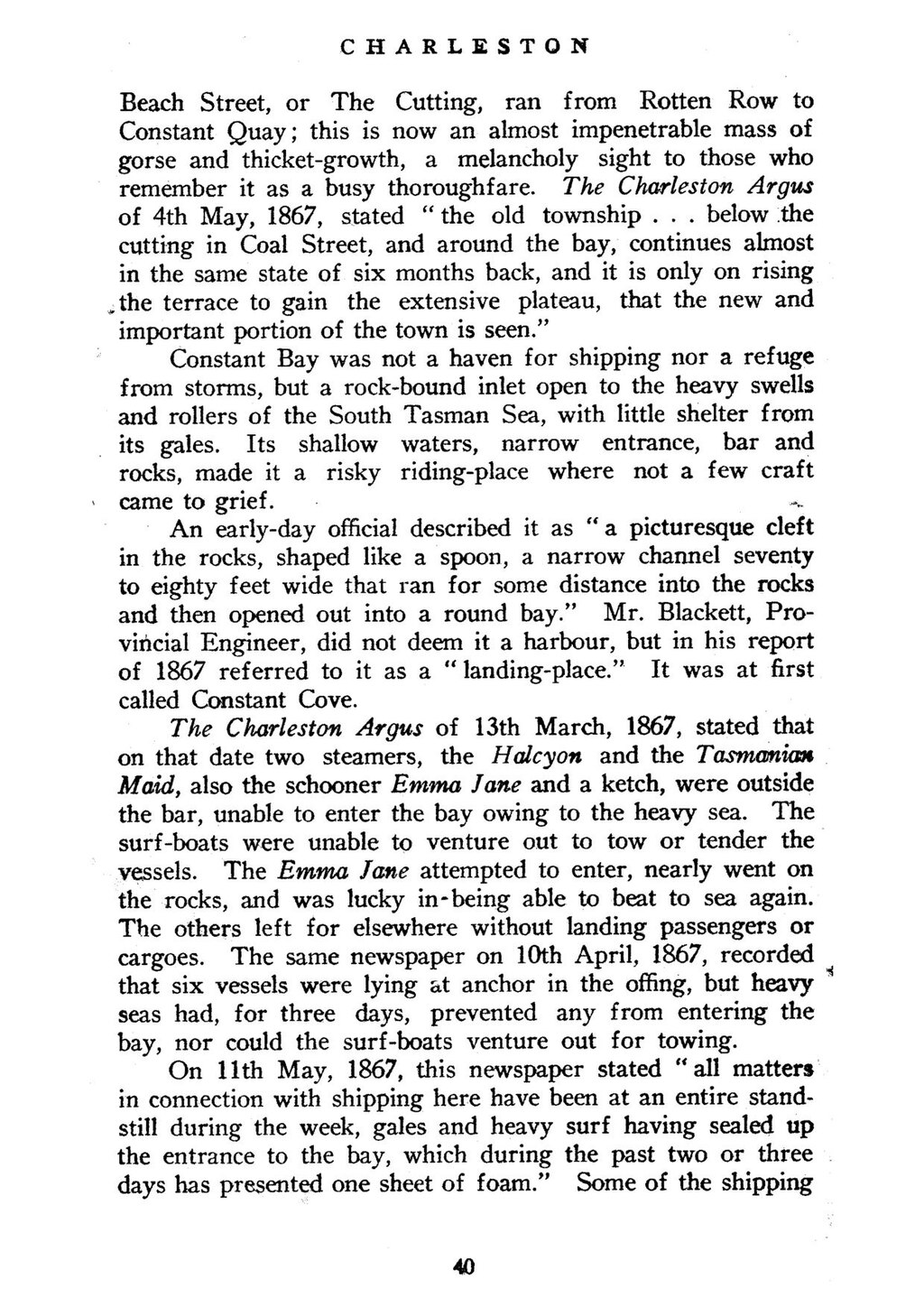CHARLESTON
Beach Street, or The Cutting, ran from Rotten Row to Constant Quay; this is now an almost impenetrable mass of gorse and thicket-growth, a melancholy sight to those who remember it as a busy thoroughfare. The Charleston Argus of 4th May, 1867, stated “the old township . . . below the cutting in Coal Street, and around the bay, continues almost in the same state of six months back, and it is only on rising the terrace to gain the extensive plateau, that the new and important portion of the town is seen.”
Constant Bay was not a haven for shipping nor a refuge from storms, but a rock-bound inlet open to the heavy swells and rollers of the South Tasman Sea, with little shelter from its gales. Its shallow waters, narrow entrance, bar and rocks, made it a risky riding-place where not a few craft came to grief.
An early-day official described it as “a picturesque cleft in the rocks, shaped like a spoon, a narrow channel seventy to eighty feet wide that ran for some distance into the rocks and then opened out into a round bay.” Mr. Blackett, Provincial Engineer, did not deem it a harbour, but in his report of 1867 referred to it as a “landing-place.” It was at first called Constant Cove.
The Charleston Argus of 13th March, 1867, stated that on that date two steamers, the Halcyon and the Tasmanian Maid, also the schooner Emma Jane and a ketch, were outside the bar, unable to enter the bay owing to the heavy sea. The surf-boats were unable to venture out to tow or tender the vessels. The Emma Jane attempted to enter, nearly went on the rocks, and was lucky in being able to beat to sea again. The others left for elsewhere without landing passengers or cargoes. The same newspaper on 10th April, 1867, recorded that six vessels were lying at anchor in the offing, but heavy seas had, for three days, prevented any from entering the bay, nor could the surf-boats venture out for towing.
On 11th May, 1867, this newspaper stated “all matters in connection with shipping here have been at an entire standstill during the week, gales and heavy surf having sealed up the entrance to the bay, which during the past two or three days has presented one sheet of foam.” Some of the shipping
40
